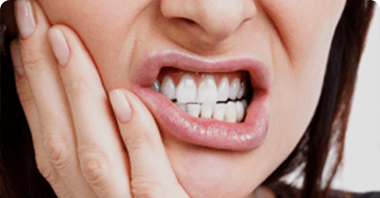

Gingivitis is a condition in which there is inflammation of the gums or gingiva. It is caused by a layer of plaque or bacteria accumulating on the teeth. Gingivitis is a common type of periodontal disease. It can progress to gum infection called periodontitis which is serious and can eventually lead to loss of teeth. Signs of GINGIVITIS include red, swollen gums that bleed easily when the person brushes their teeth. Gingivitis treatment can be initiated by improving oral hygiene, such as brushing and flossing regularly. Gingivitis symptoms are mild in the beginning but the condition should be taken seriously and addressed immediately. There are two main types of Gingival diseases: 1. Dental plaque-induced gum disease caused by plaque accumulation, medications or malnutrition. 2. Non-plaque induced gum disease which can - develop due to a number of different causes such as a bacterial, viral, or fungal infection; genetic factors, systemic conditions, wounds, or reactions to foreign bodies. Causes of Gingivitis 1. Gingivitis is a condition in which there is a build-up of bacterial plaque over the teeth. The plaque sets off an immune response which causes the destruction of gum tissue. As it progresses, it can lead to further complications, including tooth decay and loss of teeth. 2. Dental plaque is a thin layer of biofilm that accumulates naturally on the teeth. This plaque is generated by bacteria that attempt to adhere to the tooth surface. These biofilm bacteria might help to protect the mouth from the colonization of harmful microorganisms, but dental plaque can also cause tooth decay, and periodontal problems such as gingivitis and chronic periodontitis, a gum infection. When plaque is not removed adequately, it turns into calculus, or tartar, which collects at the base of the teeth, near the gums. Tartar has a yellow colour and it can only be removed professionally by a periodontist. Other causes and risk factors 1. Hormonal changes: This may occur during puberty, menopause, the menstrual cycle, and pregnancy. The gingiva might become more sensitive, raising the risk of inflammation. 2. Diseases: certain cancers, diabetes, heart disease, and autoimmune conditions. 3. Drugs: Oral health may be affected by some medications, especially if saliva flow is reduced. Dilantin, an anticonvulsant, and some antianginal medications can cause abnormal growth of gum tissue. 4. Smoking: Regular smokers more commonly develop gingivitis. 5. Age: The risk of gingivitis increases with age. 6. Poor diet: A vitamin-C deficiency is linked to gum disease. 7. Family history: Those with a family history of gingivitis have a higher risk of developing it. This is thought to be due to the type of bacteria we acquire during our early life.
Plaque and tartar irritate the gums, causing gum infection and inflammation around the base of the teeth which causes bleeding gums.